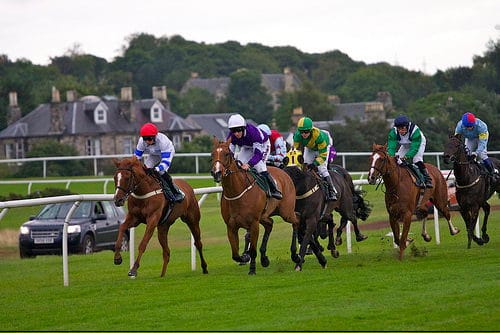The “Sport of Kings” is one of the oldest and most loved sports in the globe’s entirety. Archaeological records suggest that horse racing was around in Ancient Greece, Babylon, and Egypt’s glory days.
It became more of a spectator sport during the Roman Empire, especially under the reign of Caligula. The mad Roman Emperor absolutely loved horses and even got his favorite horse Incitatus a place in the historic Roman Senate:
With a rich history, it is of little surprise that horse racing has established itself as the second most popular spectator sport in the UK. In 2013, the iconic jumps meeting at Cheltenham attracted more than 235,000 people, with multi-million pounds spent on the betting. On top of this, many believe that Cheltenham 2015 will be even better supported in terms of attendance and betting.
Yet despite its popularity, something that will continue to increase, we take the art of horse racing for granted. Not only do the jockeys that sit in the saddle put themselves at grave risk every race – AP McCoy, the greatest jumps jockey in history, has broken nearly every bone in his body – but there is also a certain degree of science involved in horse racing, a fact that is nearly always overlooked.
AP McCoy by Paolo Camera
So what science is involved in racing?
Drafting
Horses can gain an aerodynamic advantage if they can get into the horse’s slipstream in front, much like in motor racing. Drafting, as it is called, can see a performance increase by two percent, which is the difference between finishing first and fifth.
A jockey using the draft approach would tuck in behind the leading horses and use them as a wind buffer. By allowing the horses in front to tire due to them battling wind resistance, you can save your horse’s energy reserves until the final dash.
It has been noted that the horses that win races in the final stages of a race are not those who increase their speed the most but those whose speed decreases the least. With this logic, it makes it extremely beneficial and wise to incorporate a drafting approach to racing.
Jockey’s Positioning
If you have ever been to the races if you haven’t, you really should; you would have noticed the peculiar racing position jockey’s sit in.
This crouched “Martini Glass” riding stance allows the jockey to avoid the acceleration and deceleration that horses must apply to an inert load. As a result, this position means that the jockey retains a fairly consistent speed through each horse’s strides, which means less work for the horse.
An experienced jockey should move very little from their position. Findings suggest that a jockey at the top of their game should move just 6 centimeters in an up or down direction and just 2cm in a forward or backward direction. This control level means far less work for the horse, allowing it to hit far greater speeds.
Blinkers
Whilst it may not fall into the jurisdiction of physics or even biology, a horse’s psyche is imperative to success.
These animals can often get spooked, and it is not uncommon to see them unsaddle their jockey before a race has even started. Often, it is because of the mental state they are in, which can lead them to be unnerved by other horses.
To counteract this event, trainers stick blinkers on their horses to stop them from looking in any direction bar forwards. Although it may not have the same prevalence as drafting or the jockeys positioning, there is still some scientific logic behind it.





